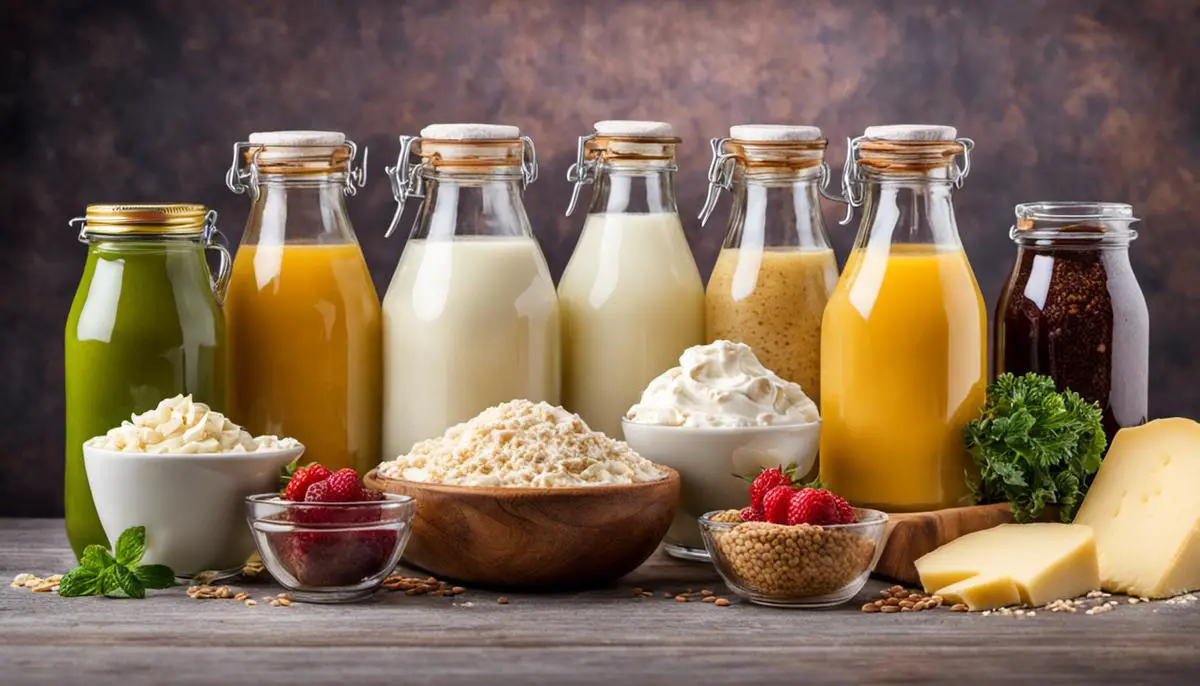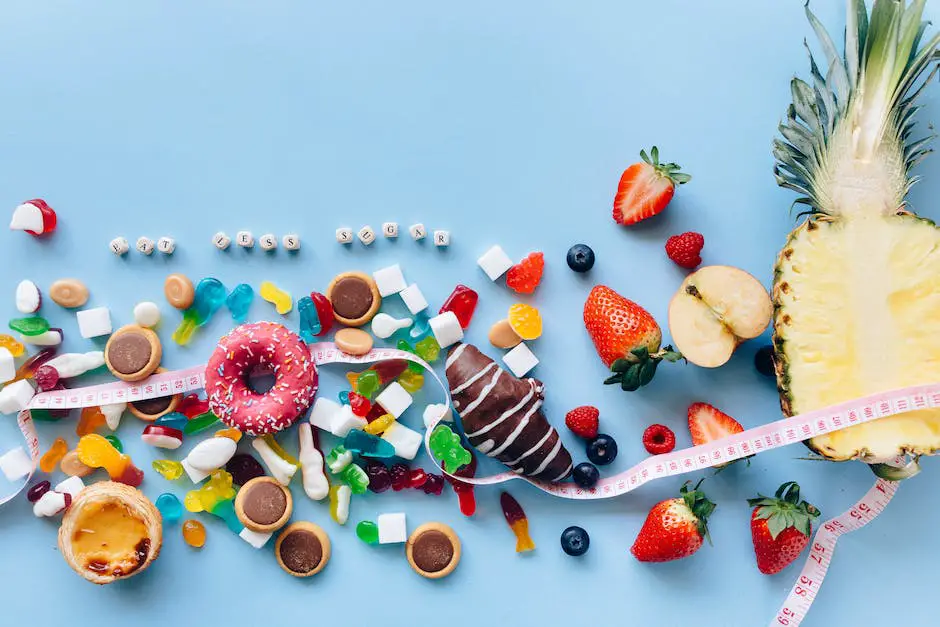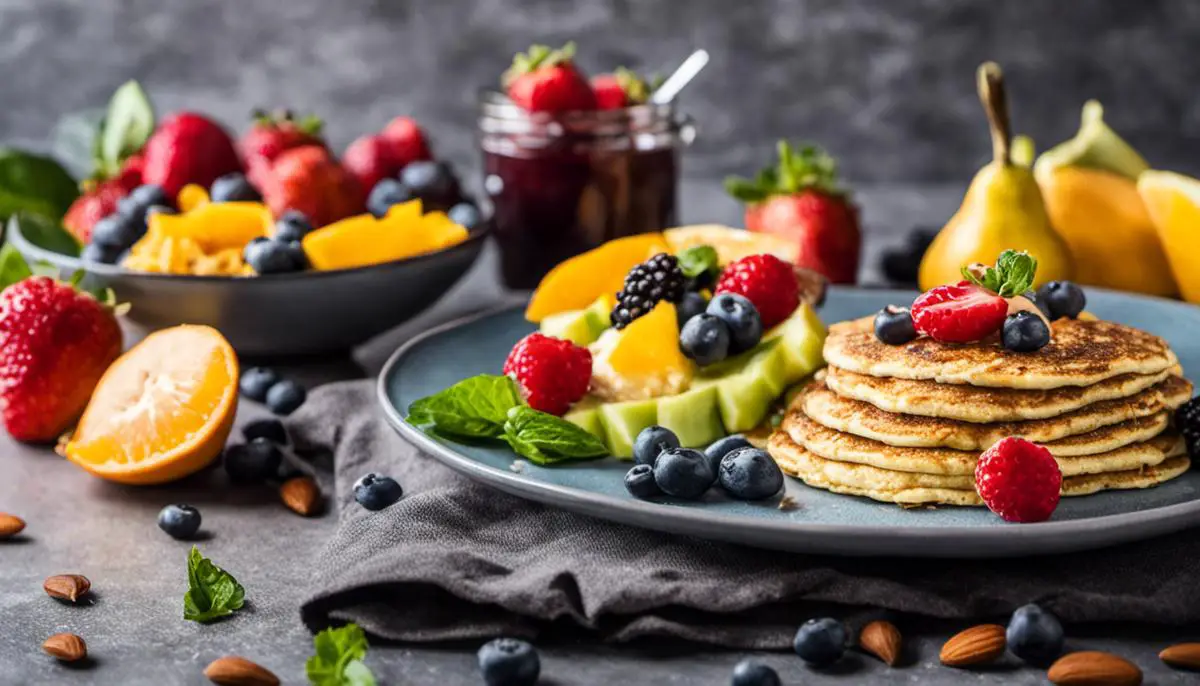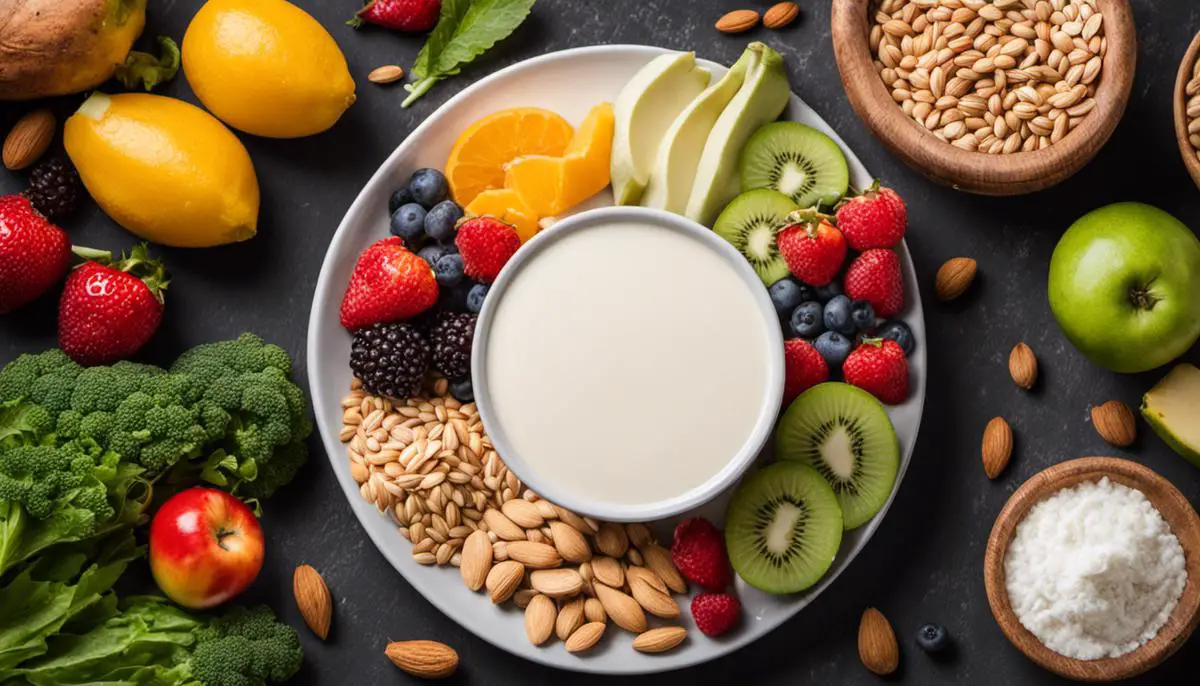Living with diabetes doesn’t mean that you have to sacrifice taste or variety in your meals. Understanding how to balance your nutrition in a way that fits your lifestyle and diabetic needs can open new doors for delicious, healthy eating. This begins with exploring how diabetes impacts your body’s nutritional needs, particularly your blood glucose levels. Further investigation into diabetic-friendly ingredients, especially dairy substitutes, can provide a new outlook on how to approach your meals. Dive deeper into a selection of dairy-free alternatives, such as almond milk, cocoanut milk, or soy-based products – understanding their nutritional values and unique flavors. With this knowledge, the delightful world of preparing healthy, hearty and dairy-free breakfast recipes beckons. Not only will these recipes fuel your day, they will also cater to your specific diabetic needs, fostering a balanced diet enriched with proteins, dietary fibers, and healthy fats.
Understanding Diabetes and Nutrition
Understanding Diabetes and Blood Sugar Levels
Diabetes is a chronic disease where the body fails to properly manage sugar levels in the blood, often due to lack of insulin or resistance to its effects. When you eat a meal, your digestive system breaks some food down into sugar (glucose). Then, insulin, a hormone produced by the pancreas, helps glucose to enter cells where it can be used for energy. In people with diabetes, this process is disrupted, leading to high blood sugar levels, which can cause a host of health issues, from heart disease to kidney damage.
Impact of Dietary Choices on Diabetes
The types of food you choose to eat can significantly impact your blood sugar levels. High-carbohydrate foods, like sugary sodas, bread, and pasta, can cause sudden spikes and crashes in blood sugar. On the other hand, high-fiber foods – such as fruits, vegetables, whole grains, and legumes – slow sugar absorption, helping to maintain more stable blood sugar levels. Because different foods have varying effects on blood sugar, it’s important to monitor and balance what you eat.
Understanding Dairy-Free Ingredients
Going dairy-free can be beneficial for managing diabetes as many dairy products contain high amounts of saturated fats, which can increase insulin resistance. Substituting with dairy-free alternatives also helps those with lactose intolerance or allergy. However, care must be taken, as some dairy substitutes also contain high quantities of sugar and unhealthy fats.
Choosing the Right Dairy Substitutes
Various dairy substitutes are available that are diabetic-friendly. For instance, unsweetened almond milk is low in carbs and high in calcium, making it a great dairy alternative. Similarly, coconut milk and soya milk are also good options. It is crucial to check the product labels for sugar content before buying dairy substitutes.
Another alternative to dairy products is fortified plant-based yogurts, such as those made from almond, coconut, or soya. They provide beneficial effects of yogurt without the lactose content. Vegan cheeses made from nuts or soy also provide great dairy-free options that are rich in protein.
Conclusion
Keeping a keen eye on what you eat and maintaining a balanced, nutritious diet is fundamental to managing diabetes. Incorporating dairy-free substitutes, along with portion control and regular physical activity, can help keep your blood sugar levels on track and manage diabetes effectively.

Studying Dairy Substitutes
Exploring Dairy Substitutes
As you venture into dairy-free diet options, a vast variety of substitutes are available to replace traditional dairy products like milk and cheese. These alternatives offer a broad range of nutritional values, tastes, and consistencies, making it easy to find ones that meet your dietary needs and taste preferences. When exploring these replacements, look for options that are low in sugars but high in protein and fiber.
Almond Milk: A Popular Choice
Almond milk stands as a popular dairy alternative due to its light and nutty flavor. However, its real virtue is in its nutritional profile. This non-dairy milk substitute is naturally lactose-free and offers vitamins like calcium and vitamin E, which are beneficial for bone health. Almond milk is also low in calories and sugar, which makes it an ideal substitute for diabetics. It’s important to choose unsweetened almond milk to avoid added sugars.
Coconut Milk: An Exotic Choice
Coconut milk, with its creamy texture and slightly sweet flavor, offers a delightful option to cow’s milk. Often used in cooking and baking, this lactose-free milk substitute is higher in fat than other alternatives, but it contains no sugars and therefore is a good option for those with diabetes. It’s important to carefully review the label when choosing coconut milk, aiming for options that contain no added sugars.
Soy-based Products: The Protein Powerhouse
If protein is your primary focus, soy-based products shouldn’t be overlooked. Soy milk, for example, contains almost as much protein as cow’s milk but with less fat and no lactose. Its taste is somewhat similar to cow’s milk, making it a common addition to cereal or coffee. Soy cheese and soy yogurt also offer nutritious alternatives to their dairy counterparts. However, some soy products may contain added sugars, so choosing unsweetened options is crucial.
Wrapping Up: Dairy-Free Cheese
When it comes to cheese substitutes, many options are available that replicate the creaminess and flavor of traditional cheese. From almond-based to coconut and soy-based cheeses, these options often contain less fat and calcium than normal cheese but still offer a satisfying substitute. Make sure to choose dairy-free cheese products that are fortified with calcium and other important nutrients, and again, ensure that no added sugars are present.
Dairy-Free Diabetic Friendly Breakfast Options
When starting your day with a dairy-free diabetic friendly breakfast, using these substitutes provides a great way to maintain a balanced diet without sacrificing taste and variety. Always remember to check labels for added sugars, and choose the options that are high in protein and fiber.

Healthy Breakfast Recipes
Understanding Diabetes and Diet
Diabetes is a condition that affects your body’s ability to process sugar. This means that people with diabetes need to be careful about what they eat, especially at breakfast time. Certain foods, such as those high in sugar or carbs, can cause blood sugar levels to spike. Meanwhile, foods with a low glycemic index, meaning they release glucose slowly and steadily, are better choices.
Identifying Dairy-Free Breakfast Options
There are many breakfast options that are both dairy-free and suitable for diabetics. These meals often incorporate healthier alternatives for traditional dairy ingredients, such as almond milk in place of cow’s milk, and non-dairy butter substitutes. Some examples include oatmeal made with almond milk and topped with a handful of blueberries, scrambled eggs with avocados for essential healthy fats, or a smoothie made with soy or almond milk and packed with fiber-rich fruits and vegetables.
Balancing Proteins, Dietary Fibers, and Healthy Fats
It’s important to find a balance of proteins, dietary fibers, and healthy fats in your breakfast meals. Proteins provide satiety and prevent blood sugar spikes, and they can come from sources like eggs or tofu. Dietary fibers, which can be found in fruits, vegetables, and whole grains, are essential for digestive health and can also help control blood sugar levels. Healthy fats such as avocados can provide the body with lasting energy and aid in feeling satiated.
Learning about the Glycemic Index
Understanding the glycemic index of the foods you eat is crucial when managing diabetes. The glycemic index is a scale that ranks food based on how quickly it raises blood glucose levels. High GI foods cause your blood sugar to spike quickly, while low GI foods lead to a slow, steady rise in blood sugar. Incorporating low GI foods into your breakfast can help maintain steady blood sugar levels throughout your day.
Browsing Suitable Dairy-Free, Diabetic Breakfast Recipes
Start by searching for dairy-free, diabetic breakfast recipes online. Websites like the American Diabetes Association, Mayo Clinic, and Healthline offer many safe and healthy breakfast recipes that are both dairy-free and suitable for managing diabetes. You can also refer to cookbooks geared towards diabetic eating, or consult with a nutritionist or dietitian for personalized guidance.
Evaluating Each Meal’s Nutritional Value
When evaluating each meal, be sure to examine its nutritional value, especially its carbohydrate, sugar, fiber, and protein content. Check the portion size as well. You want to ensure that the meal fits within your daily dietary requirements, and won’t cause a spike in your blood sugar. Adjust quantities or substitute ingredients if necessary to best suit your dietary needs.
By doing the right research and understanding what food choices are most beneficial for your health, you can create a nutritious and delicious dairy-free diet plan that helps manage your diabetes.

Hands-On Cooking Practice
Understanding Diabetic and Dairy-free Requirements
As a diabetic, it is crucial to regulate blood sugar levels, which means your breakfast should be low in carbohydrates, especially sugars. It should also be high in fiber, protein, and heart-healthy fats. When cooking dairy-free, you need to cut out all dairy products such as milk, cheese, and butter. Instead, use alternatives made from plants, such as almond milk, coconut oil, and nutritional yeast.
Recipe: Almond Flour Pancakes
For a simple but satisfying breakfast, try these dairy-free and diabetic-friendly almond flour pancakes. Begin by mixing 1 cup of blanched almond flour, 2 large eggs, 2 tablespoons of water, 3 tablespoons of pure maple syrup, and 1 teaspoon of vanilla extract in a bowl until smooth. Heat a non-stick skillet over medium heat and drop 1/4 cup portions onto the skillet. Wait until the pancakes are bubbly on top and golden on the bottom, about 2-3 minutes. Flip and cook until golden on the bottom, 1-2 minutes more. Serve with fresh fruits and some sugar-free syrup.
Recipe: Tofu Scramble
Another great dairy-free and diabetic-friendly option is a tofu scramble. Start by heating 1 tablespoon of olive oil in a pan over medium heat. Crumble 200g of tofu into the pan and cook for 5 minutes until the water evaporates. Add 1/2 onion and 1/2 bell pepper (both chopped) to the pan and cook until the vegetables are tender. Season with 1/2 teaspoon of turmeric, 1/2 teaspoon of garlic powder, and salt and pepper to taste. Cook for a few more minutes then serve with whole grain bread.
Recipe: Chia Seed Pudding
For a make-ahead breakfast, try chia seed pudding. In a jar or a cup, mix 1/4 cup chia seeds, 1 cup of almond milk, and 1 tablespoon of a no-calorie sweetener like Stevia, until well combined. This will be your base. Then, leave it in the fridge overnight. In the morning, you can stir in your choice of additional toppings, like nuts, seeds, or berries. Remember to keep the toppings low-sugar as well, as fruits contain natural sugars.
Emphasizing Variety
Remember, the key to enjoying any diet or nutritional plan is variety. By trying out different recipes and experimenting with ingredients, you’ll never get bored with your breakfast options. It’s also important to experiment with spices and herbs to add flavor without adding extra calories or sugars. Lastly, rely on whole, fresh ingredients whenever possible to ensure you’re getting the most nutritional bang for your buck.
Adjusting for Preferences
Over time, adjust these recipes based on your taste preferences and nutritional requirements. If you enjoy savory over sweet breakfasts, experiment with dairy-free and low-carb options like vegetable omelets with dairy-free cheese alternatives. If you prefer sweet, look at low-sugar fruits to help satisfy your cravings in a healthier way. By diversifying your options, you will find it easier to stay committed to your dietary needs.

A new day heralds a new opportunity to invest in your health, armed with an understanding of your body’s needs and the impact of food on your blood glucose levels. Embrace dairy-free, diabetic friendly breakfasts and experience the joy of cooking hands-on, exploring various recipes and their nutritional composition. You have the power to adapt recipes based on your taste preferences and nutritional needs, cultivating a repertoire of meals that not only nourish your body, but also your spirit. Remember, living with diabetes does not limit your dietary choices. Instead, it empowers you to make informed decisions that lead to a healthier, more gratifying lifestyle.
